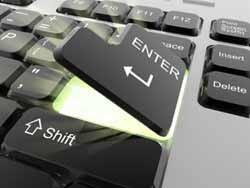
Ctrl + C or Ctrl + Insert :Copy the highlighted text or selected item.Ctrl + V or Shift + Insert :Paste the text or object that's in the clipboard.Ctrl + Z and Ctrl + Y :Undo any change. For example, if you cut text, pressing this will undo it. This can also often be pressed multiple times to undo multiple changes. Pressing Ctrl + Y would redo the undo.Ctrl + F :Open the Find in any program. This includes your Internet browser to find text on the......


